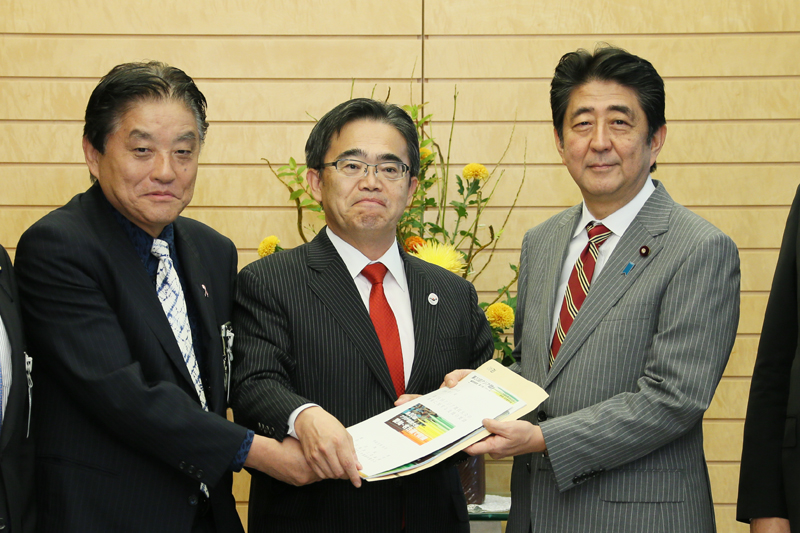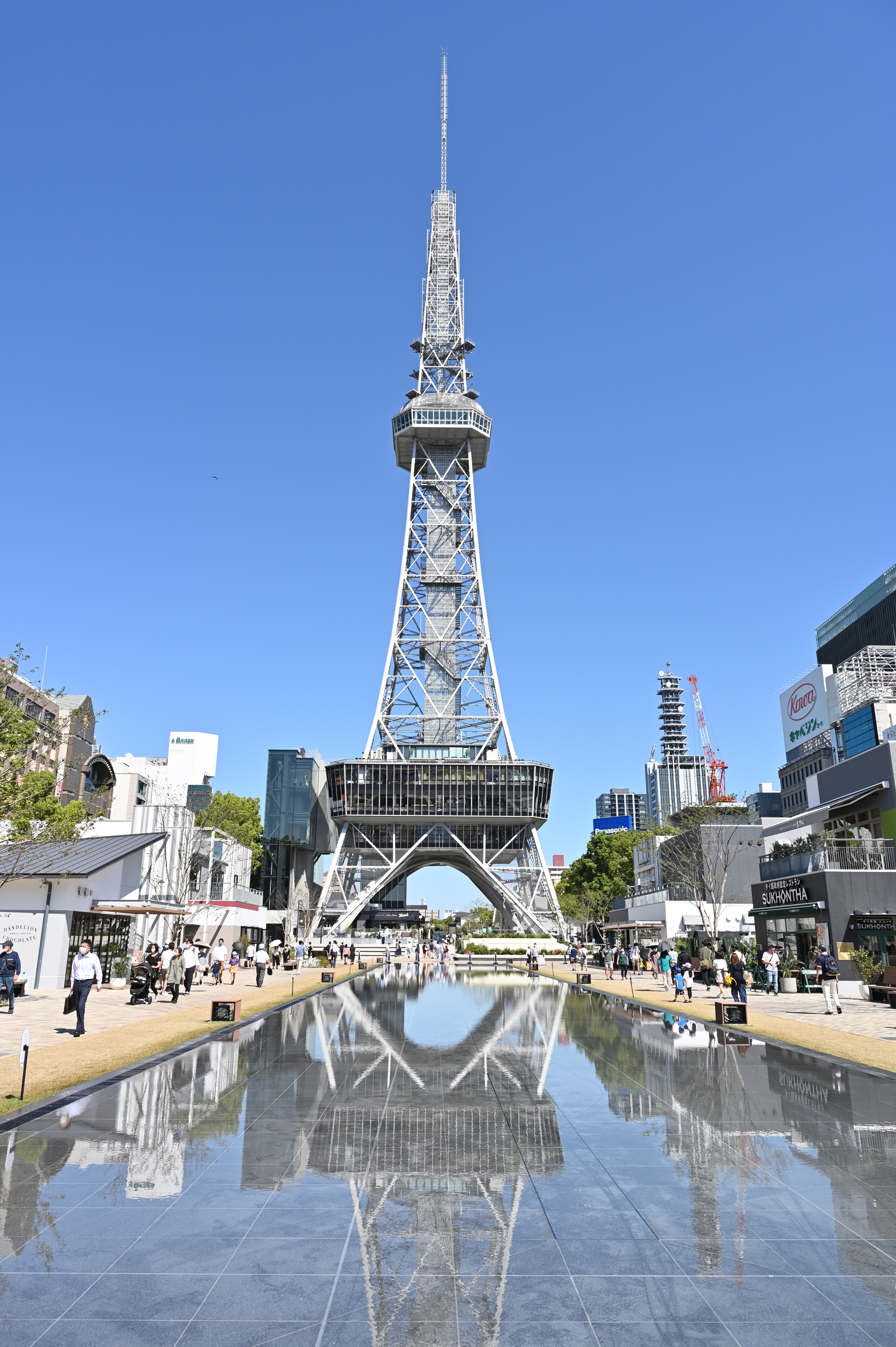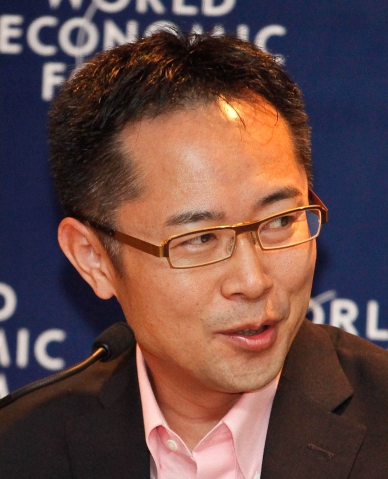|
Nagoya
is the largest city in the Chūbu region, the fourth-most populous city and third most populous urban area in Japan, with a population of 2.3million in 2020. Located on the Pacific coast in central Honshu, it is the capital and the most populous city of Aichi Prefecture, and is one of Japan's major ports along with those of Tokyo, Osaka, Kobe, Yokohama, and Chiba. It is the principal city of the Chūkyō metropolitan area, which is the third-most populous metropolitan area in Japan with a population of 10.11million in 2020. In 1610, the warlord Tokugawa Ieyasu, a retainer of Oda Nobunaga, moved the capital of Owari Province from Kiyosu to Nagoya. This period saw the renovation of Nagoya Castle. The arrival of the 20th century brought a convergence of economic factors that fueled rapid growth in Nagoya, during the Meiji Restoration, and became a major industrial hub for Japan. The traditional manufactures of timepieces, bicycles, and sewing machines were followed by th ... [...More Info...] [...Related Items...] OR: [Wikipedia] [Google] [Baidu] |
Nagoya Castle
is a Japanese castle located in Nagoya, Japan. Nagoya Castle was constructed by the Owari Domain in 1612 during the Edo period on the site of an earlier castle of the Oda clan in the Sengoku period. Nagoya Castle was the heart of one of the most important castle towns in Japan, Nagoya-juku, a post station on the Minoji road linking two of the important Edo Five Routes, the Tōkaidō and the Nakasendō. Nagoya Castle became the core of the modern Nagoya and ownership was transferred to the city by the Imperial Household Ministry in 1930. Nagoya Castle was destroyed in 1945 during the bombing of Nagoya in World War II and the reconstruction and repair of the castle has been undergoing since 1957. ''Meijō'' (名城), another shortform way of pronouncing Nagoya Castle (名古屋城), is used for many Nagoya city institutions such as Meijō Park, the Meijō Line of the Nagoya Municipal Subway, and Meijo University, reflecting the cultural influence of this historic structure. ... [...More Info...] [...Related Items...] OR: [Wikipedia] [Google] [Baidu] |
Aichi Prefecture
is a prefecture of Japan located in the Chūbu region of Honshū. Aichi Prefecture has a population of 7,552,873 () and a geographic area of with a population density of . Aichi Prefecture borders Mie Prefecture to the west, Gifu Prefecture and Nagano Prefecture to the north, and Shizuoka Prefecture to the east. Overview Nagoya is the capital and largest city of Aichi Prefecture, and the fourth-largest city in Japan, with other major cities including Toyota, Okazaki, and Ichinomiya. Aichi Prefecture and Nagoya form the core of the Chūkyō metropolitan area, the third-largest metropolitan area in Japan and one of the largest metropolitan areas in the world. Aichi Prefecture is located on Japan's Pacific Ocean coast and forms part of the Tōkai region, a subregion of the Chūbu region and Kansai region. Aichi Prefecture is home to the Toyota Motor Corporation. Aichi Prefecture had many locations with the Higashiyama Zoo and Botanical Gardens, The Chubu Centrair Internat ... [...More Info...] [...Related Items...] OR: [Wikipedia] [Google] [Baidu] |
Port Of Nagoya Public Aquarium
The is a public aquarium in Minato-ku, Nagoya, Aichi Prefecture, Japan. It is the public aquarium with the largest tank capacity and total area in Japan. It also owns Japan's largest dolphin show tank. History Opened in 1992, the Port of Nagoya Public Aquarium is a public aquarium operated by Nagoya Minato Promotion Foundation. In 2001, the aquarium built a new facility, including a wide, long, show pool, with a water depth of . When it opened, it was the largest dolphin show tank in the world. There is also a breeding research facility for penguins and sea turtles in the building. In the past, the aquarium has had success in breeding emperor penguins, Adelie penguins and chinstrap penguins. In 2015, a Rhina ancylostoma, shark ray that accidentally ate a puffer fish survived and attracted a lot of attention. Research and Conservation * Sea turtles : In 1995, the artificial hatching of Loggerhead sea turtle, loggerhead turtles was successful, and was the first in Japan to ... [...More Info...] [...Related Items...] OR: [Wikipedia] [Google] [Baidu] |
Sakae, Nagoya
is an area in Naka-ku, Nagoya, Aichi, Japan. It refers to the areas around Sakae intersection, Sakae Station on the Nagoya Municipal Subway and Sakae Station on the Meitetsu Seto Line. Sakae is in the heart of Nagoya and is, along with Nagoya Station, one of Nagoya's main commercial districts. Overview The Sakae district is formed around the Sakae intersection ''Otsu-dori'' going north–south and ''Hirokōji-dori'' going east–west. It is the main shopping district of Nagoya, along with Nagoya Station and its immediate vicinity. Parallel to Otsu-dori is Hisaya-Ōdori; this road runs from Yaba-cho to Sakae except for Sotobori-dori, which is maintained as Hisaya Ōdori Park. Popular events are held in this park on the weekend. Also, inside Hisaya-odori Park is the 180-meter Nagoya TV Tower, built in 1954, which is often mentioned as a symbol of Nagoya. At night, the tower is lit and can be seen all over Sakae. Adjacent to the tower is a large facility called Oasis ... [...More Info...] [...Related Items...] OR: [Wikipedia] [Google] [Baidu] |
Port Of Nagoya
The , located in Ise Bay, is the largest and busiest trading port in Japan, accounting for about 10% of the total trade value of Japan. Notably, this port is the largest exporter of cars in Japan and where the Toyota Motor Corporation exports most of its cars. It has piers in Nagoya, Tōkai, Aichi, Chita, Aichi, Yatomi, Aichi, and Tobishima, Aichi. Its mascots are Potan and Mitan. According to Japanese media sources, Kodo-kai, a Yakuza faction in the Yamaguchi-gumi group, earns large revenues by controlling the stevedoring and warehousing companies at the port. History The Port of Nagoya opened for international trade in 1907.http://www.worldportsource.com/ports/commerce/JPN_Port_of_Nagoya_1382.php Nagoya Port Authority The (NPA) was established on 8 September 1951 as a special local public entity that jointly operates the Port of Nagoya for the city of Nagoya and Aichi Prefecture. It has special district authority over the Port of Nagoya, which includes facilities in four diff ... [...More Info...] [...Related Items...] OR: [Wikipedia] [Google] [Baidu] |
Takashi Kawamura (politician)
is a Japanese politician of the Nagoya-based Genzei Nippon (減税日本 "Tax Cut Japan") party, currently serving as Mayor of Nagoya. He was previously a member of the House of Representatives in the Diet (national legislature). Kawamura's antics have earned him a peculiar reputation outside of Nagoya, but local voters see him as an exponent of Nagoya's unique culture who constantly speaks in strong dialect ( Nagoya-ben). As of 2021, he has been elected for 4 terms as mayor, and there are 12 members of his Genzei Nippon party on the Nagoya City Council. Biography Family The family is from Kodekimachi in Higashi-ku, Nagoya. Kawamura's father Kaneo had served in the Second Sino-Japanese War (1937–1945) as a corporal (伍長) in the 101st Division, which was part of the Shanghai Expeditionary Army, taking part in the Battle of Nanjing. After the war ended in August 1945, he remained at the Qixia Temple outside of Nanjing until January 1946, and was repatriated in March of ... [...More Info...] [...Related Items...] OR: [Wikipedia] [Google] [Baidu] |
Legoland Japan Resort
is a theme park in Nagoya, Japan. It opened on April 1, 2017. It is the first Legoland theme park in Japan; the second in Asia, after Legoland Malaysia Resort; and the eighth worldwide. The park was projected to attract over two million visitors annually. History On June 30, 2014, Merlin Entertainments announced plans to open a LEGOLAND Resort in Nagoya. Construction officially began on April 15, 2015. With a budget of $250 million USD, construction was implemented by Art and Project, TAA Group, and Tejix. Its designers were Art and Project, EDG Company, FORREC, and Scruffy Dog. The companies supplying the rides were Art Engineering, Bertazzon, ETF, Hafema, Lagotronics Project, Mack Rides, Metallbau Emmeln, Sansei Technologies, SB International, Sunkid, WhiteWater, Zamperla, and Zierer. Additional suppliers were Accesso, Alcorn McBride, Attractions.io, Christie Digital, Gateway, SAP, TAA Group, and Tejix. The park is located in Nagoya's Minato Ward, has over 40 attractions on ... [...More Info...] [...Related Items...] OR: [Wikipedia] [Google] [Baidu] |
Chūbu Region
The , Central region, or is a region in the middle of Honshu, Honshū, Japan, Japan's main island. In a wide, classical definition, it encompasses nine prefectures (''ken''): Aichi Prefecture, Aichi, Fukui Prefecture, Fukui, Gifu Prefecture, Gifu, Ishikawa Prefecture, Ishikawa, Nagano Prefecture, Nagano, Niigata Prefecture, Niigata, Shizuoka Prefecture, Shizuoka, Toyama Prefecture, Toyama, and Yamanashi Prefecture, Yamanashi. It is located directly between the Kantō region and the Kansai region and includes the major city of Nagoya as well as Pacific Ocean and Sea of Japan coastlines, extensive mountain resorts, and Mount Fuji. The region is the widest part of Honshū and the central part is characterized by high, rugged mountains. The Japanese Alps divide the country into the Pacific Ocean, Pacific side, sunny in winter, and the Sea of Japan side, snowy in winter. Although Mie Prefecture, Mie is part of Kinki/Kansai/Western Japan in traditional geographical regional div ... [...More Info...] [...Related Items...] OR: [Wikipedia] [Google] [Baidu] |
Tōkai Region
The is a subregion of the Chūbu region and Kansai region in Japan that runs along the Pacific Ocean. The name comes from the Tōkaidō, one of the Edo Five Routes. Because Tōkai is a sub-region and is not officially classified, there is some disagreement about where exactly the region begins and ends, however Japanese maps widely conclude that the region includes Shizuoka, Aichi, Gifu and Mie prefectures. The largest major city in the region is Nagoya and the Chūkyō Metropolitan Area (Nagoya Metropolitan Area) makes up a large portion of the region and has Japan's third strongest economy. The business influence of this urban area sometimes extends out into the outlying areas of the three prefectures centered on Nagoya which are Aichi, Gifu, and Mie; this area is sometimes referred to as the Chūkyō region. Tōkai is a heavy manufacturing area and is one of the most industrial regions in Japan. Its coast is lined with densely populated cities with economies that thr ... [...More Info...] [...Related Items...] OR: [Wikipedia] [Google] [Baidu] |
Cities Designated By Government Ordinance Of Japan
A , also known as a or , is a Cities of Japan, Japanese city that has a population greater than 500,000 and has been designated as such by order of the Cabinet of Japan under Article 252, Section 19, of the Local Autonomy Law. Designated cities are delegated many of the functions normally performed by prefectures of Japan, prefectural governments in fields such as public education, social welfare, sanitation, business licensing, and urban planning. The city government is generally delegated the various minor administrative functions in each area, and the prefectural government retains authority over major decisions. For instance, pharmaceutical retailers and small clinics can be licensed by designated city governments, but pharmacies and hospitals are licensed by prefectural governments. Designated cities are also required to subdivide themselves into (broadly equivalent to the boroughs of London or the boroughs of New York City), each of which has a ward office conducting v ... [...More Info...] [...Related Items...] OR: [Wikipedia] [Google] [Baidu] |
Nagoya TV Tower
The (formerly but still referred to as the ) is a TV tower in Nagoya, central Japan. History It is the oldest TV tower in Japan, and was completed in 1954. It is located in the centre of Hisaya Ōdori Park. The tower is 180 metres high, and has two main observation decks at the heights of 90 metres (the indoor Sky Deck) and 100 metres (the outdoor Sky Balcony). The tower also includes a restaurant and gallery at 30 metres. Nagoya TV Tower closely resembles the Eiffel Tower. Recently, the tower became known under the nickname of "Thunder Tower" due to the nighttime illumination. The tower also included a bowling alley at the top. In May 2021, the tower was given a new name, the Chubu Electric MIRAI TOWER. In popular culture The famous movie monster, Godzilla pulled the tower down in '' Mothra vs. Godzilla'' (1964), and twenty-eight years later, it was destroyed again in the 1992 remake, ''Godzilla vs. Mothra''. This time around, it is demolished by the monster Battra, when th ... [...More Info...] [...Related Items...] OR: [Wikipedia] [Google] [Baidu] |
Aichi's Diet Electoral Districts
Aichi Prefecture currently sends 36 elected members to the Diet of Japan, 29 to the House of Representatives and 7 to the House of Councillors. House of Representatives The current House of Representatives Aichi delegation consists of 14 members of the LDP, 6 DPFP, 5 CDP, 1 Komeito, 1 JCP, 1 NIK and 1 independent. District seats PR seats Aichi Prefecture is part of the Tokai proportional representation block. In the current Diet, there are 14 Representatives from Aichi elected through the Tokai PR block. House of Councillors The current House of Councillors Tokyo delegation consists of 2 members of the DPFP, 2 LDP, 1 CDP, 1 Komeito and 1 independent. The members are elected from the Aichi at-large district The Aichi at-large district is a constituency of the House of Councillors in the Diet of Japan that represents Aichi Prefecture. From 1947 until 2013 it has elected six Councillors, three every three years by single non-transferable vote (SNTV) f .... The ... [...More Info...] [...Related Items...] OR: [Wikipedia] [Google] [Baidu] |









